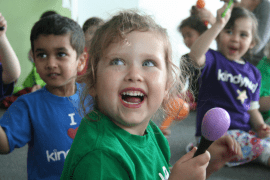By Mariah Apostolopoulos
In this blog post, I aim to break down the literacy terminology you may come across when reading about literacy. In the Starting with Sounds Busy Book by Busy Books Australia, you will also find a glossary of terminology as well as a visual which breaks down phonological awareness – that is a set of important skills for literacy development at the syllable, word and phoneme (sound unit) level. These skills start to emerge before kids can read and write and is the foundation to literacy development.
Phonological awareness involves the detection and manipulation of sound structures in spoken words, orally, before even talking about written text. It is the explicit teaching of phonological awareness, together with phonics (teaching of letter sound links) which is important for learning to read and spell.

The visual above, which you can find in the Busy Book Starting with Sounds, describes the phonological awareness umbrella. It is adapted from a variety of sources (listed below) and put together in a way that makes most sense to me and probably to most people working with literacy. This phonological awarenss umbrella is adapted from: Melanie Schuele and Donna Boudreau, ‘Phonological Awareness Intervention: Beyond the Basics’. Language Speech and Hearing Services in Schools 39(1), 2008, 3-20\
There are a number of stages under the umbrella, with skill difficulty ranging from left to right.
Syllable awareness is a component under the phonological umbrella. That is, being able to break up words into ‘claps’ or ‘drumbeats’ such as ba – na – na (3 claps). This is a skill often developed after 3 years.
Word level awareness is being able to play with words that sound similar and vary with one sound, or words that start with the same sound. Rhyming is a common skill under this component of the umbrella and it is often targeted in books, nursery rhymes and familiar preschooler songs.
While rhyming is important, research tells us it’s best to not focus on it for too long if you have a child who just can’t do it, as it’s not the strongest indicator for later literacy mastery.
Phonemic awareness is a key component under the phonological umbrella. It is the most important component for learning to read and spell and involves the identifying, blending, segmenting and manipulation of sounds in spoken words.
Here are some examples of phoneme level tasks:
- Onset-rime awareness and manipulation eg. changing the first sound or consonant blend before the vowel b-at, m-at, sp-at
- Matching words with first sound, final and middle
- Identifying first, final and middle sounds
- Blending sounds “m…oo…n”
- Segmenting sounds – how many sounds in this word?
- Phoneme manipulation eg. dash, change the d to m.
- Deletion of sound in a word ‘say it without the x.. What’s the new word?’
Blending, segmenting and sound manipulation skills are critical to reading mastery.
Starting with Sounds Busy Book and Now we’re Reading Busy Book by Busy Books Australia, both strengthen these important literacy skills to harness confident readers, writers and spellers. You can find the pages that target each of these skills at the start of each Busy Book under a table of contents.
Written by Certified Speech Pathologist Mariah Apostolopoulos of Sound Adventures www.soundadventures.com.au Mariah is also the content creator of the two new Busy Books from Busy Books Australia, Starting with Sounds and Now we’re Reading. You can check them out at www.busybooksaustralia.com.au.











